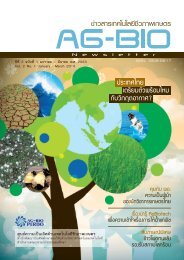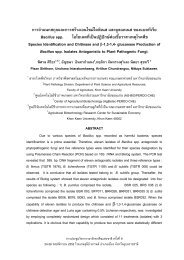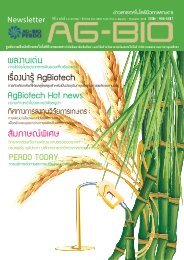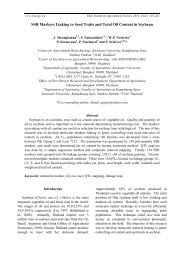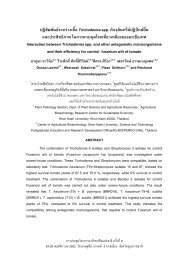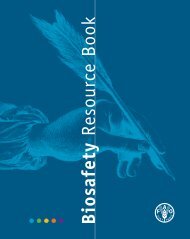Biosafety Manual PDF - Lawrence Berkeley National Laboratory
Biosafety Manual PDF - Lawrence Berkeley National Laboratory
Biosafety Manual PDF - Lawrence Berkeley National Laboratory
You also want an ePaper? Increase the reach of your titles
YUMPU automatically turns print PDFs into web optimized ePapers that Google loves.
<strong>Biosafety</strong> <strong>Manual</strong><br />
IBC-approved version (May 18, 2010)<br />
Equipment<br />
Type<br />
sharps<br />
ultraviolet (UV)<br />
C radiation<br />
Hazards<br />
Any device having corners, edges, or<br />
projections capable of cutting or piercing<br />
the skin. LBNL's definition of sharps<br />
includes regulated sharps (medical<br />
waste), unregulated biohazardous<br />
sharps, and unregulated uncontaminated<br />
sharps that pose a safety hazard to<br />
custodians and other personnel.<br />
UVC radiation is used for inactivating<br />
microorganisms. Its usefulness,<br />
however, is limited by a variety of factors<br />
(e.g., low penetrating power). The eyes<br />
and skin can be damaged by exposure<br />
to direct or strongly reflected UV<br />
radiation.<br />
Examples<br />
• needles with or without syringes<br />
• needles with vacutainers<br />
• needles with attached tubing<br />
• blades (razors, scalpels, X-ACTO knives)<br />
• broken glass<br />
• glassware with sharp edges or points<br />
• pasteur pipettes and glass slides<br />
UV lights must be evaluated to determine if the<br />
benefits outweigh the potential hazards. UV<br />
radiation is sometimes used in conjunction<br />
with:<br />
• unoccupied tissue culture rooms<br />
• biological safety cabinets<br />
• UV light boxes<br />
3.5 Worker Competence and Health<br />
The BMBL five-step approach to assessing biological risk and selecting controls for laboratory<br />
work was initially presented in Section 3.2 of this manual. Step 4 of this approach (i.e., the<br />
evaluation of a worker’s proficiencies or competence) and the evaluation of a worker’s health<br />
are discussed in this section. Step 4 is an ongoing process where the supervisor or work lead<br />
evaluates a worker’s training, instructions, qualifications, behavior, and health. Worker training<br />
and health requirements are also a component of the <strong>Biosafety</strong> Work Authorization.<br />
Workers are the first line of defense for protecting themselves, others in the laboratory, and the<br />
public from exposure to biohazardous agents. <strong>Laboratory</strong> staff must therefore be properly<br />
trained, instructed, and qualified before conducting work. Supervisors and work leads should<br />
train and evaluate staff to the point where knowledge of the agent and procedure hazards,<br />
aseptic techniques, safety practices, use of safety equipment, caution, and attentiveness<br />
become second nature. Knowledge and experience prior to job assignment may also be<br />
necessary qualifications. See Section 5.2 for more information on training, instruction, and<br />
qualification.<br />
In addition, a worker’s health status may affect his or her susceptibility to an infection or ability<br />
to receive immunizations or prophylactic intervention. Workers who know they have an illness or<br />
medical condition that affects their immune system or their ability to receive vaccines or<br />
medications should seek an evaluation by Health Services in Building 26. See Section 5.4 for<br />
additional information regarding worker health and immunization.<br />
4.0 <strong>Biosafety</strong> Principles and Levels<br />
To determine which controls are required to mitigate hazards and perform work safely,<br />
supervisors and work leads must understand and apply the processes and requirements for<br />
defining work, identifying hazards, and assessing risks, as discussed in Section 3.0 of this<br />
manual. Controls are safeguards employed to contain biological agents or materials and<br />
therefore prevent the exposure of workers, other people, or the environment to agents that may<br />
harm them.<br />
Printed copies are not official versions of this manual. Before using the printed copy, verify that it is the most current version.<br />
30



